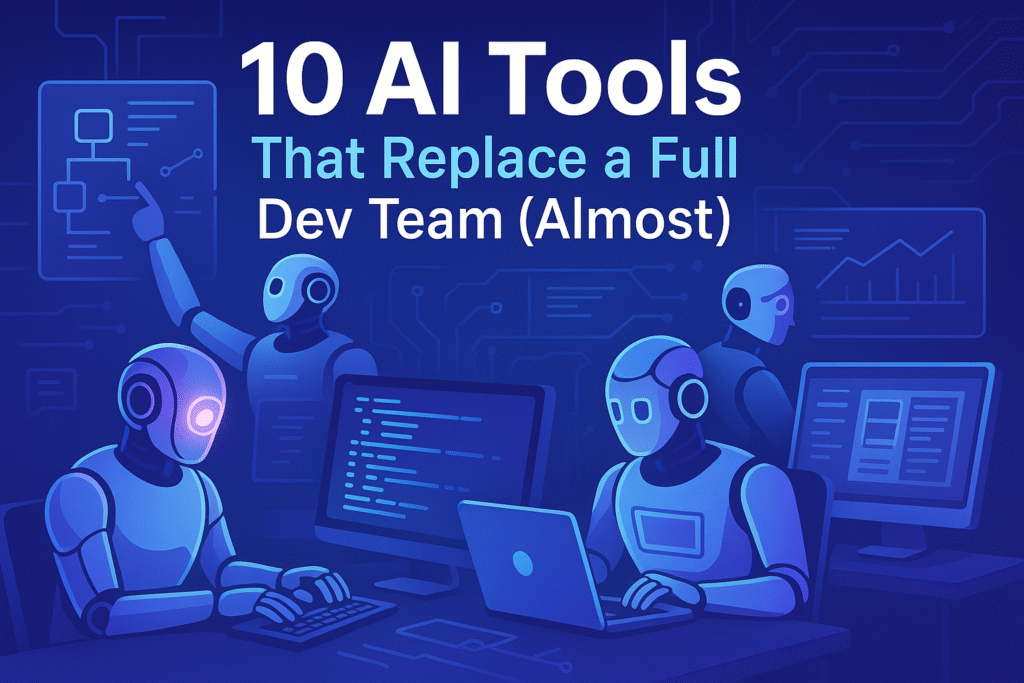In 2025, competition is fiercer than ever. Startups can’t just rely on great ideas—they must move fast, scale smart, and stay lean. That’s where AI automation becomes your secret weapon. When you combine AI with automation, you unlock the ability to accelerate everything: web design, mobile app development, digital marketing, customer relationships, and operations.
For early-stage companies, integrating workflow automation and CRM integrations isn’t optional—it’s essential. Doing this well means saving time, reducing costs, making fewer errors, and staying ahead of market shifts. In this article, we’ll explore how startups can harness AI + automation to supercharge business growth in 2025.
1. Why AI Automation Matters for Startups
1.1 Enhanced Efficiency & Reduced Operational Costs
Startups often operate with small teams and tight budgets. AI can take over repetitive, low-value tasks—data entry, scheduling, lead scoring, follow-ups—so your human team focusses on strategy, creativity, and innovation. According to research, AI business process automation can significantly reduce operational costs, sometimes cutting down on hours wasted each week. Elandz+2ASPER BROTHERS+2
1.2 Smarter Data-Driven Decision-Making
AI tools ingest large volumes of data, surface insights, trends, customer behaviors, and help founders make informed decisions. Whether it’s user behavior analytics from your web or mobile app, performance of digital marketing campaigns, or forecasting sales, AI helps reduce guesswork. Codica+3ASPER BROTHERS+3Salesforce+3
1.3 Scalability Without Proportionate Costs
As your startup grows, manual processes that weren’t problematic early on become bottlenecks. Workflow automation allows scaling with minimal incremental cost. Whether your server demands increase, or traffic to your app or website surges, or your customer base grows, AI + automation lets you handle volume. Codica+2Elandz+2
1.4 Improved Customer Experience
Fast responses, personalized communication, and consistent quality matter. AI-powered chatbots, automated email drip campaigns, customized web and mobile app UX—these can all elevate customer satisfaction. The result—better retention and loyalty. Marketer Milk+2ASPER BROTHERS+2
2. Key Areas Where AI + Automation Delivers Biggest Impact
Below are the main domains where startups should focus first:
2.1 Web Design & Development
AI-driven design tools & templates: Tools that suggest UI/UX improvements, generate layouts, recommend colour schemes or imagery based on audience data.
Responsive & adaptive design automation: Ensuring websites/apps adapt automatically to devices, localization, bandwidth etc.
Code generation / low-code platforms: Using AI helpers to write boilerplate, frontend/back-end scaffolding, or assist in testing.
These reduce design/development cycles and let startups get to MVPs, prototypes, or live products much faster.
2.2 Mobile App Development
AI-assisted testing & QA: Automating unit tests, regression tests, UI tests etc.
Predictive performance & user behavior analytics: Using AI to predict app crashes, errors, or high-drop off screens so you can fix them early.
Feature personalization: Based on user data, location, usage habits—dynamically changing content or UX for better retention.
2.3 Digital Marketing Automation
Content generation & scheduling: Generative AI helps craft ad copy, blog posts, social media content; automation schedules or posts across channels.
Ad targeting & segmentation using AI: AI can segment users, identify high potential audiences, optimize bidding and budget allocation.
Drip campaigns & lead nurturing: Automatically follow up with leads via personalized messages based on their behavior.
2.4 CRM Integrations & Sales Automation
AI-powered CRMs: Tools that do lead scoring, predictive deal closure estimation, detect anomalies in pipeline. (E.g., Zoho CRM with Zia, etc.) Reply –+2The CRO Club+2
Integrations & orchestration: Connecting your CRM with email tools, marketing tools, customer support, finance or billing systems so data flows automatically. This avoids data silos. Lindy+2Salesforce+2
Sales automation & analytics: Automating follow-ups, reminders, quote generation; using AI to forecast sales, monitor team performance. monday.com+1
3. Real-World Use Cases & Success Stories
To make this more concrete, here are startup-friendly examples:
A startup replaced a virtual assistant costing ~$2000/month with an AI automation suite (~$200/month) and saw better accuracy, 24/7 availability, and much faster response volumes. Medium
Another using AI + Intelligent Document Processing (IDP) & OCR for automating expense processing reduced time taken by over 80%, lowered error rates, and improved compliance. arXiv
Startups employing AI CRM tools like Zoho CRM with Zia are able to get predictive insights, lead scoring, and anomaly detection which help sales teams focus effort on high potential opportunities. Reply –+2The CRO Club+2
4. Common Challenges & How To Address Them
Even though AI + automation has huge promise, there are pitfalls and challenges. Being aware ahead of time helps.
| Challenge | Why It Matters | What To Do |
|---|---|---|
| High initial learning curve & setup costs | Some tools, integrations, customizing AI systems require technical work, data cleaning, etc. | Start small: pick 1-2 key workflows to automate first. Use tools with good support/no-code / low-code. |
| Data privacy & security risks | Handling customer data, behavior data etc. needs compliance (GDPR, local laws, etc.). | Make sure tools you choose have strong security, encryption, clear privacy policies. Use anonymized data where possible. |
| Over-automation leading to loss of personal touch | If everything is automated, customers may feel disconnected or that responses are generic. | Keep room for human touch; use AI to assist humans not replace entirely. Use personalization. |
| Integration complexity & tool fragmentation | If your CRM, web apps, mobile apps, marketing tools aren’t well integrated, automations break or produce inconsistent data. | Choose platforms with native integrations or use middleware (Zapier, Integromat etc.). Plan data flows. |
| Maintenance & monitoring required | Automation isn’t “set and forget”—models need updates, data drift, errors may creep in. | Build monitoring, feedback loops. Have humans-in-the-loop for exceptions. Regular audits. |
5. How to Start: A Step-by-Step Guide for Startups in 2025
Here’s a roadmap for how a startup can begin implementing AI + automation in a strategic way.
Audit your current workflows
List out repetitive tasks (customer support, lead follow-ups, content scheduling, reporting etc.).
Identify bottlenecks and where human time is being wasted.
Set clear goals & KPIs
What do you want to improve? (e.g., reduce support response time by 50%, increase lead-to-customer conversion, reduce dev cycle time, etc.)
Define metrics to track progress (time saved, error reduction, revenue impact etc.).
Pick tools that align with your needs & budget
For smaller startup budgets, there are affordable AI CRMs like Zoho, Nimble etc. The CRO Club
Use no-code/low-code platforms for workflow automation (e.g. Zapier, Creatio). Wikipedia+1
For marketing, choose platforms that integrate content creation + scheduling + analytics.
Integrate systems & automate data flows
CRM ↔ Marketing tools ↔ Customer support tools ↔ Web/Mobile analytics.
Automate data syncing so no manual exports/imports.
Pilot & iterate
Start with one or two automations; monitor results.
Collect feedback, adjust. Use human-in-loop where AI isn’t perfect.
Scale gradually & maintain
As you see returns, expand automation.
Keep monitoring, updating models, ensuring compliance, data integrity.
6. Tools & Platforms to Consider
Here are some tools you should evaluate. Many combine AI + automation + integrations:
| Tool / Platform | Best For | Key Features |
|---|---|---|
| Zoho CRM with Zia | Startups needing an affordable, AI-powered CRM | Lead scoring, deal prediction, anomaly detection, integrated automation. Reply –+1 |
| HubSpot | Digital marketing + CRM + customer lifecycle tracking | Automated campaigns, lead nurturing, CRM + marketing tools. Lindy |
| Salesforce (Einstein, etc.) | High growth startups or those with complex sales funnels | Advanced forecasting, real-time insights, cross-channel integrations. The CRO Club+1 |
| Zapier | Tool-oriented integration + workflow automation without heavy dev | Connects many apps, build automations (“zaps”) that trigger actions. Zapier+1 |
| Creatio | Low/No-code platform with strong workflow + CRM features | Allows designing workflows, automating customer interactions; good for operations and CRM. FlowForma |
7. How AI + Automation Ties into Web Design, Mobile App Development & Digital Marketing
To maximize your startup growth, these three areas should be implemented in tandem:
Web Design & Digital Marketing Synergy: AI-powered web designs that adapt and personalize based on user behavior support smoother landing pages, better conversion—and marketing can feed data back into design to improve UX.
Mobile App + CRM & Marketing Integration: If your mobile app has user behavior data, feeding that into CRM + automated marketing lets you send personalized push notifications, in-app messaging, or emails.
AI in App Dev + Marketing Analytics: Using AI for A/B testing (design or UI), performance optimization, predictive forecast (which features to build or improve based on user feedback), which help in product roadmap decisions.
8. Forecast for 2025 & Beyond: What’s Coming
Looking ahead, here are trends to watch and adopt if possible:
More generative AI agents that can autonomously manage workflows, coordinate tasks between tools, take decisions based on rules + real-time data.
Increased use of multi-agent systems in CRM/ERPs—agents that specialize (e.g. content agent, sales-agent, support agent) and coordinate.
Smarter document processing (IDP + AI) for handling invoices, receipts, contracts etc., reducing manual overhead. arXiv+1
More no-code AI platforms so non-technical founders can build automations with fewer resources.
Better AI integration in web design tools — predictive UX, voice interfaces, AI-assisted accessibility features.
Conclusion
For startups in 2025, AI + automation is not just a luxury—it’s arguably one of the most powerful levers you have. When implemented thoughtfully, it lets you:
save time and money,
make data-driven decisions,
scale without linear cost increases,
improve customer experience, and
maintain agility.
If you start small, choose tools wisely, integrate your systems, and continuously monitor & iterate, AI + automation can be the engine that powers your startup’s growth.
At Digital WebXpert, we help businesses build that engine—websites, apps, automation flows, AI integrations. If you want to know how to apply this specifically to your startup or project, I’d be happy to map out a custom plan.



